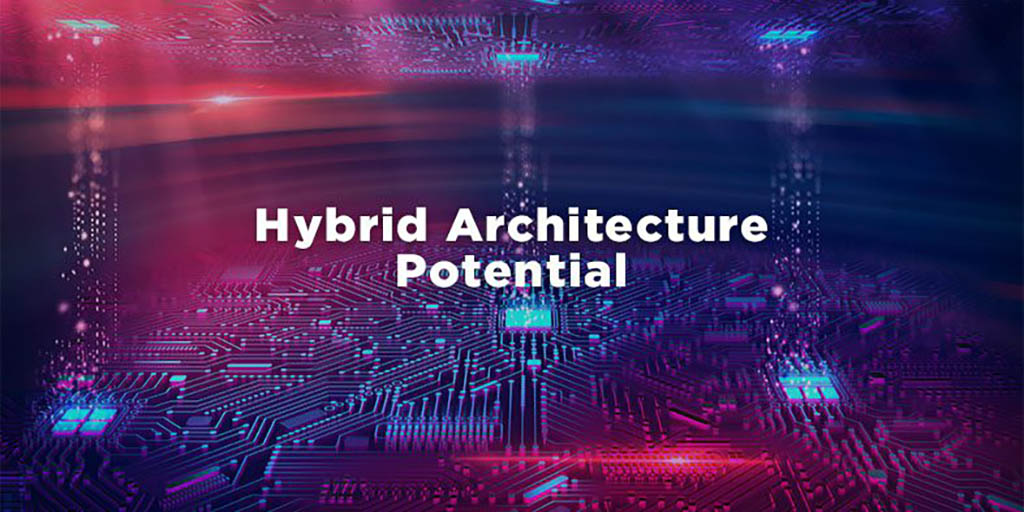VDURA’s Ken Claffey offers insights on unlocking the potential of hybrid architectures, designed as a guide for HPC. This article originally appeared on Solutions Review’s Insight Jam, an enterprise IT community enabling the human conversation on AI.
Navigating storage infrastructure is increasingly complex in today’s high performance computing (HPC) and AI landscape. Organizations need to balance performance, cost, and reliability while ensuring alignment with organizational business objectives. Often, decision-makers find themselves prioritizing two of these elements at the expense of the third. However, while selecting the appropriate system, this compromise is not always required.
Using a Hybrid Storage approach that combines the benefits of multiple storage device technologies—such as traditional disk storage and flash storage— organizations can achieve a balanced strategy that satisfies requirements for performance, reliability and affordability without requiring trade-offs.
Understanding hybrids storage environments is critical to making thoughtful decisions that fulfill immediate needs and facilitate long-term success. Effective data storage solutions are essential to scaling and maintaining a competitive advantage.
Hybrid vs. All-Flash Storage Architectures
High-performance computing (HPC) and AI environments are inherently complex, whether progressing scientific research or augmenting artificial intelligence projects. HPC and AI environments depend on numerous computers working as a cluster to handle extensive amounts of data processing, and it usually requires a robust parallel file system to create a comparably scaled back-end storage infrastructure to keep these computers, or more specifically the CPU/GPU, running efficiently.
A key question is what is the nature of the data infrastructure underneath the parallel file system? Do you use an All-Flash approach or go Hybrid, using a combination of flash and traditional disk storage within a single architecture? Understanding these architectural approaches, and the respective trade-offs, can reveal how a hybrid environment might better serve your organization’s needs.
While all-flash storage systems offer impressive performance with rapid data access times, their high costs can be prohibitive, especially for organizations with budget constraints that expect their need for storage capacity to significantly grow over time. The volatile pricing of commodity storage devices like solid-state drives further elevates the total cost of ownership for all-flash systems. Moreover, data efficiency techniques such as compression and deduplication can obscure the actual cost of flash storage and the effectiveness of such techniques can vary widely especially as workloads change over time.
That said, all-flash systems are an attractive choice for use cases that require massive performance with a relatively small amount of capacity (burst buffers) or very specific workloads that call for the maximum input/output (IOPS). Hybrid environments, however, offer an enticing option for businesses because of their unparalleled flexibility and cost efficiency, which can be even further lowered when including suitable compression and deduplication. These environments give organizations the freedom to tailor their storage infrastructure to the changing demands of their workloads, as well as the ever-expanding capacity needs that are typical of HPC and AI. This adaptability is crucial in HPC and AI, as it ensures an optimized balance between high-speed performance and expansive data sets, all while keeping costs in check and maximizing computational efficiency.
Hybrid architectures are not only vital in the rapidly evolving HPC and AI landscape for their cost-efficient scalability to burgeoning data sets, but they also help organizations keep pace with the exponential growth in data volume. By integrating a blend of flash storage for high-speed performance and HDD for larger capacity, hybrid systems provide the essential scalability that HPC demands for processing and storing ever expanding data sets. This scalability is key because it offers organizations the ability to expand their storage capacity in line with their evolving requirements.
However, the sophistication of these systems necessitates a corresponding depth of knowledge for effective maintenance and management. A study by Hyperion Research highlights a looming challenge for the HPC sector: a shortage of qualified workers. This deficit could become a significant hurdle for HPC enterprises, necessitating a considerable investment in attracting and retaining top talent. Such financial commitments are likely to inflate the ongoing operational and management costs, underscoring the need for a strategic approach to workforce development in the HPC domain.
How to Ensure Durability and Availability
To mitigate risks associated with downtime and data loss, organizations must ensure high levels of both durability and availability of data in their HPC and AI environments; and hybrid environments can give organizations the best chance at maintaining both.
High availability ensures data can be regularly accessed. From fault tolerance to accessibility and uptime, high availability is necessary in HPC systems to prevent interruptions in research or normal business operations. When choosing an HPC storage provider, availability strength should be specified through uptime percentages, often referred to as “nines” (e.g., 99.999% uptime and 99.99999999 percent durability). Downtime can be costly, even amounting to $100,000 every day your system is down. Hybrid environments excel in availability by leveraging failover mechanisms and proactive monitoring to maintain uninterrupted data access.
But having high availability won’t matter if you don’t have protection against data loss. Though availability may first come to mind as a priority considering data storage, durability is an equally important, yet often overlooked component. When we talk about data durability, we’re referring to a system’s ability to prevent data loss, including redundancy, recovery and resiliency. Like availability, durability must be specified as a requirement with a clear definition of the measurement, for example your typical cloud storage provider will specify their data durability in the range of eleven nines 99.999999999 percent. With this level of Durability if you store one billion objects you would likely not lose any of them for a hundred years.
In summary, hybrid architectures empower organizations in the high-performance computing sector to refine their data storage frameworks, mitigating risks associated with the volatility of storage commodities. They achieve a harmonious equilibrium of performance, capacity, durability, and availability—essential components for robust data management. Moreover, the inherent scalability and adaptability of data infrastructure are crucial for keeping abreast of the dynamic shifts in business and technological landscapes.


